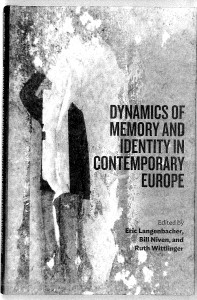Anna Di Lellio
Monuments marking the battlefield are placed a few kilometers apart: a memorial to the fallen Christian heroes, the turbe (mausoleum) of the Sultan’s standard-bearer in the locality known as Gazirnestan, and the Sultan’s turbe to the west, at Mazgiti They are archeological and political signifiers of opposing camps, physical symbols of discourses and practices that “memory entrepreneurs” have adopted to plot national stories.‘ Most notable and best known among them is the Serbian narrative of the battle, constructed as a unique tale of Christian martyrdom granting Serbia histori-
cal rights over Kosovo. Less obvious plotlines built on the memorialization of the battle and its mythical protagonists are also relevant to Albanianand Turkish national discourses. In the contemporary political context, theold battlefield has become a highly resonant political symbol of European identity for all.

